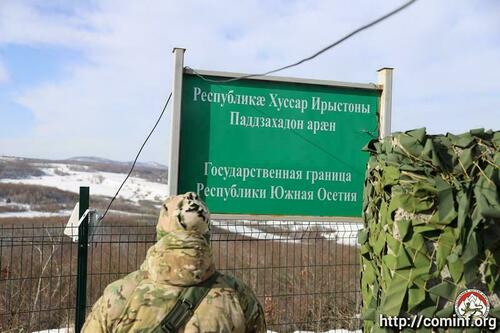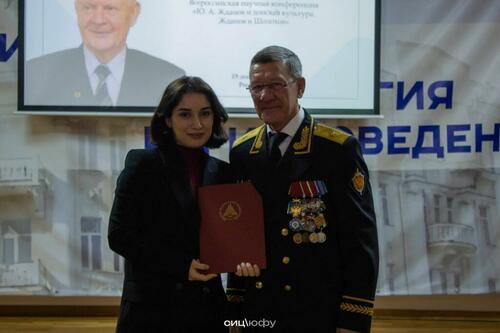to:
the UN Secretary General,
the President of the Russian Federation,
the Federation Council of the Federal Assembly of the Russian Federation,
the State Duma of the Federal Assembly of the Russian Federation,
the Heads of states and Parliaments of the CIS and the EU member-states
In 1774 united Ossetia voluntarily joined the Russian state whereas the Georgian principalities were only included in Russia in 1801. From that time and until 1917 Georgia had not been an independent state. After the collapse of the Russian Empire a self-proclaimed republic of Georgia emerged putting forward claims on the territory of the Southern part of Ossetia. In 1918-1920 the latter was subjected to an armed aggression on the part of Georgia followed by a genocide as a result of which up to 30% of the Ossetian population perished and dozens of thousands of its citizens were forced to seek shelter in the North of Ossetia.
In 1921, Soviet power was established in the Southern part of Ossetia. In 1922, counter to the will of the people, South Ossetia was included in the Georgian Soviet Socialist Republic as the South Ossetian Autonomous Oblast while North Ossetia remained within the Russian Federation. In essence, it was an administrative and political division of the united Ossetia.
The Georgian authorities launched an assimilatory policy against South Ossetia aimed at turning it into a source of raw materials for Georgia. Sheer terror fell upon South Ossetia which resulted in the extermination of the political and intellectual elite of the people of South Ossetia. The Ossetian script was replaced by the Georgian one (while in North Ossetia the Cyrillic script remained in use); in schools, instruction began to be carried out in the Georgian language.
Not one resolution previously adopted on the social-economic development of South Ossetia was implemented by the Georgian authorities. A part of the Ossetian population was forcibly moved to the North Caucasus. The decreasing of the population of South Ossetia was an indicator of the policy carried out by the Georgian authorities: the population in South Ossetia reduced from 106 thousand in 1940 to 99 thousand in 1989 while in all other regions of the USSR population growth was observed during the same period.
In November 1990 and March-June 1989 the Supreme Soviet of the Georgian Soviet Socialist Republic passed a number of resolutions abolishing all the legal acts adopted in the GSSR since 1921, including ‘The Decree on the Establishment of the South Ossetian Autonomous Oblast’ of 22 April 1922 – the only document by which South Ossetia had been included in the GSSR. Those resolutions placed South Ossetia beyond the GSSR’s legal space. The resolutions of the GSSR were a direct violation of the then still in force Constitution of the USSR. Thus Georgia, by exceeding its authorities, in fact, seceded from the USSR.
The Law of the USSR ‘On the Resolution of the Questions Relating to the Secession of a Union Republic from the USSR’ of 3 April 1990, adopted when Georgia was still a constituent part of the USSR, stipulated the right of the autonomous structures to independently decide whether to remain within the USSR or not in case the Union Republic in question seceded from the USSR. In accordance with this norm the South Ossetian Autonomous Oblast was transformed into the Democratic Republic of South Ossetia within the USSR in September 1990 and later participated in the 17 March 1991 referendum on the maintaining the USSR. Georgia refused to hold a referendum. Since that moment Georgia lost all legal rights to and grounds for having claims on South Ossetia’s territory.
On 31 March 1991 a Referendum on Independence was held in Georgia. South Ossetia did not participate in the Referendum. On April 9 1991, basing on the results of the 31 March Referendum, the Supreme Soviet of Georgia adopted an act on the Restoration of Independence of Georgian statehood and proclaimed Georgia to be the legal successor of the Democratic Republic of Georgia of 1918-1921. As it was noted earlier, South Ossetia did not recognize her being a constituent part of independent Georgia. As a result, two states emerged no longer related to each other legally: the Republic of South Ossetia and Georgia which declared its independence and secession from the USSR.
After the USSR in whose legal space South Ossetia had existed, fell apart, the Supreme Soviet of the Republic of South Ossetia adopted the Declaration of Independence of the Republic of South Ossetia. On 19 January 1992 a Referendum was held in South Ossetia where 99.9% of the participants voted for the Republic of South Ossetia’s independence. On 29 May 1992 the Supreme Soviet of the RSO adopted an Act on State Independence of the Republic of South Ossetia.
The establishment and legalization of the Republic of South Ossetia took place before the international recognition of Georgia and before its admission to the UN in June 1992 as well as before its joining the CIS in 1993. Hence, South Ossetia has neither violated nor is violating now Georgia’s territorial integrity.
In 1989-1992 South Ossetia was subjected to an open military aggression and genocide on the part of Georgia. Exterminated or ousted from the places of their permanent residence were Ossetians in Georgia as well.
Despite all this South Ossetia while striving for peace and stability and good-neighbourly relations, speaks out for a peaceful resolution of the relations with Georgia basing on the observance of the previously achieved agreements, on the non-use of force or any other means of exerting pressure. At the same time the Georgian authorities are following an openly provocative policy against South Ossetia by violating the existing agreements on the negotiations and piece-building mechanisms, by establishing puppet ‘alternative structures’ and by refusing to follow the policy of a peaceful settlement of the conflict and by threatening a new use of force.
The seventeen year long period of independence of the Republic of South Ossetia is a proof of its viability; the Republic only needs legalization of its sovereignty in accordance with the UN Charter.
By now the Republic of South Ossetia possesses all the necessary features and attributes of a sovereign state whose formation and functioning are in accordance with the criteria of a democratic, legal and social state based on a representative democracy and on the division of power principle. Democratic institutions have been formed in South Ossetia as well as a civil society; free media are functioning and an effective legal system.
The Republic of South Ossetia has made a commitment to observe all the international norms and to be a guarantor of security and equality of all national minorities. The Republic of South Ossetia reiterates its adherence to peace and stability in the Caucasian region.
In November 2006 another referendum, attended by international observers, was held in the Republic of South Ossetia on independence of South Ossetia and its recognition by the international community. The strife to independence of the people of the Republic of South Ossetia is in agreement with the UN’s Constitution and other universally recognized international legal acts.
With the ‘Kosovo precedent’ there appeared a new proof of the possibility of regional conflicts resolution on other than the solely territorial integrity principle. Realization of the right of nations to self-determination may turn out to be the only way of peaceful resolution of conflict situations in case there is reliable proof to support the nation’s ability to independently organize its life and ensure development in agreement with the universally recognized norms. This is perfectly applicable to the South Ossetian case since the approach does not contradict the right of nations to self-determination as there are no legal or factual grounds for Georgia’s sovereignty over South Ossetia’s territory.
Proceeding from the above stated and
- basing on the right of nations to self-determination,
- given the existing realities of legal grounds for the establishment and development of the Republic of South Ossetia as a sovereign state,
- taking into account the impossibility for Georgia and the Republic of South Ossetia to exist within common state,
The Parliament of the Republic of South Ossetia appeals to the UN Secretary General, to the President of the Russian Federation, to the Federation Council of the Federal Assembly of the Russian Federation, to the State Duma of the Federal Assembly of the Russian Federation, to the Heads of states and Parliaments of the CIS and the EU member-states with a request to recognize the independence of the Republic of South Ossetia.
4 March 2008






